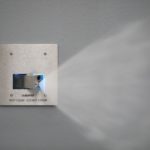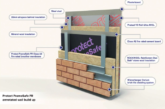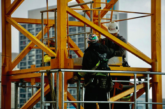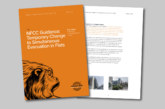Fire suppression specialist and BAFSA member Plumis is calling for those who have championed this year’s National Sprinkler Week (17th to 23rd May) to take a more forward-looking approach to ensuring opportunities to improve fire safety, aren’t missed.
A recent Building Research Establishment (BRE) report highlighted the characteristics of those who are most vulnerable to fire and the impact newer technologies could offer in improving fire prevention and the protection of residents. The research revealed that the most common cause of death from fire-related fatalities in 2019/20 was being overcome by gas or smoke — contributing to 30% of fire-related fatalities. It also identified traditional fire protection measures as providing inadequate protection for elderly and vulnerable residents — both groups are also the most at risk from serious injury or death from domestic fires.
In the report, the BRE outlined several existing and effective technical solutions — as part of its 14 recommendations — including the extension of detection and suppression watermist systems to ensure adequate fire protection is provided to all.
Traditional automatic fire suppression systems (AFSS), like sprinklers, are mechanically activated, operating when affected by the heat from a fire, so are most effective at tackling fast growing fires as the activation temperature threshold is breached quickly.
William Makant, CEO at Plumis, said: “Like most things in life, whilst sprinklers are suitable for many situations, and have undoubtedly saved lives, they have limitations. Sprinklers are most effective at tackling fast growing fires, as the temperature needed to activate them is reached quickly, minimising the time for production of smoke and toxic gas.
“In the case of slow growing or concealed fires it may take significantly longer for temperatures to reach this activation threshold, whilst hazardous volumes of toxic smoke may still be produced. In this circumstance, sprinklers offer inadequate protection for vulnerable occupants who may be in the immediate vicinity of a fire or who are unable to escape easily.”
Plumis decided to rethink the traditional sprinkler and develop Automist (pictured above), an award-winning watermist AFSS to tackle the changing fire challenges and improve protection for those most at risk.
Activated electronically, the system can overcome the constraints of existing sprinkler systems by operating earlier and tackling fires before they generate that amount of heat, helping to reduce smoke and maintain survivable conditions.
William added: “Whilst welcoming any measures that improve safety, we must not ignore the types of fire and occupancy where sprinklers do not perform well.
“Sprinkler Week should aim to examine the whole picture, highlighting newer AFSS that complement the old ones, so we can truly use this awareness week to enhance fire protection and save more lives.”
For more information about watermist suppression technology, visit: https://plumis.co.uk/









